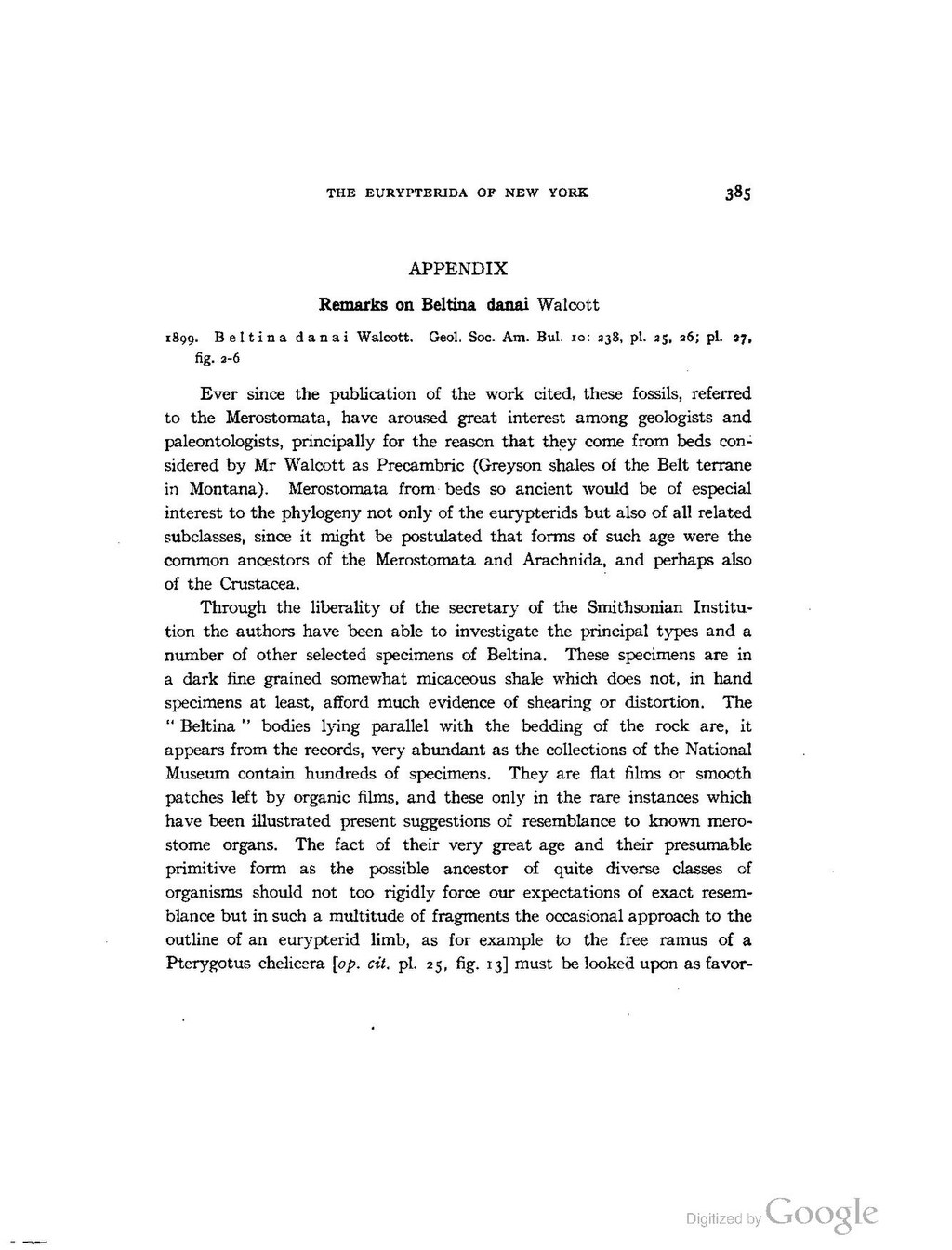APPENDIX
Remarks on Beltina danai Walcott
1899. Beltina danai Walcott. Geol. Soc. Am. Bul. 10: 238, pl. 25, 26; pl. 27, fig. 2-6
Ever since the publication of the work cited, these fossils, referred to the Merostomata, have aroused great interest among geologists and paleontologists, principally for the reason that they come from beds considered by Mr Walcott as Precambric (Greyson shales of the Belt terrane in Montana). Merostomata from beds so ancient would be of especial interest to the phylogeny not only of the eurypterids but also of all related subclasses, since it might be postulated that forms of such age were the common ancestors of the Merostomata and Arachnida, and perhaps also of the Crustacea.
Through the liberality of the secretary of the Smithsonian Institution the authors have been able to investigate the principal types and a number of other selected specimens of Beltina. These specimens are in a dark fine grained somewhat micaceous shale which does not, in hand specimens at least, afford much evidence of shearing or distortion. The "Beltina" bodies lying parallel with the bedding of the rock are, it appears from the records, very abundant as the collections of the National Museum contain hundreds of specimens. They are flat films or smooth patches left by organic films, and these only in the rare instances which have been illustrated present suggestions of resemblance to known merostome organs. The fact of their very great age and their presumable primitive form as the possible ancestor of quite diverse classes of organisms should not too rigidly force our expectations of exact resemblance but in such a multitude of fragments the occasional approach to the outline of an eurypterid limb, as for example to the free ramus of a Pterygotus chelicera [op. cit. pl. 25, fig. 13] must be looked upon as favor-
